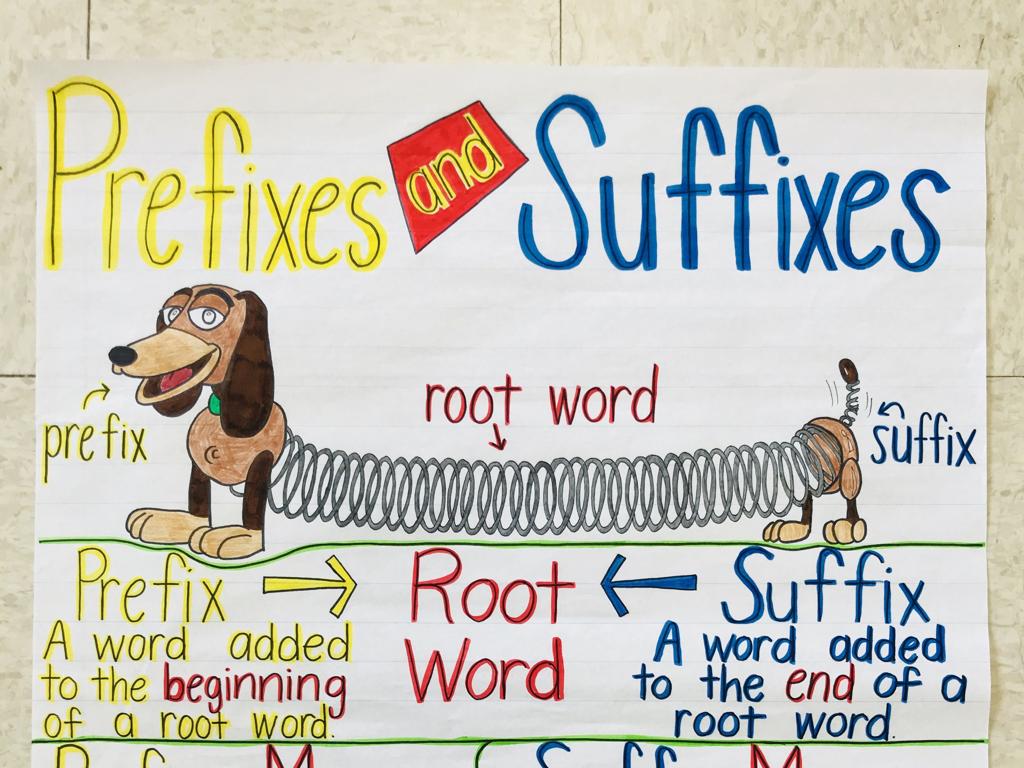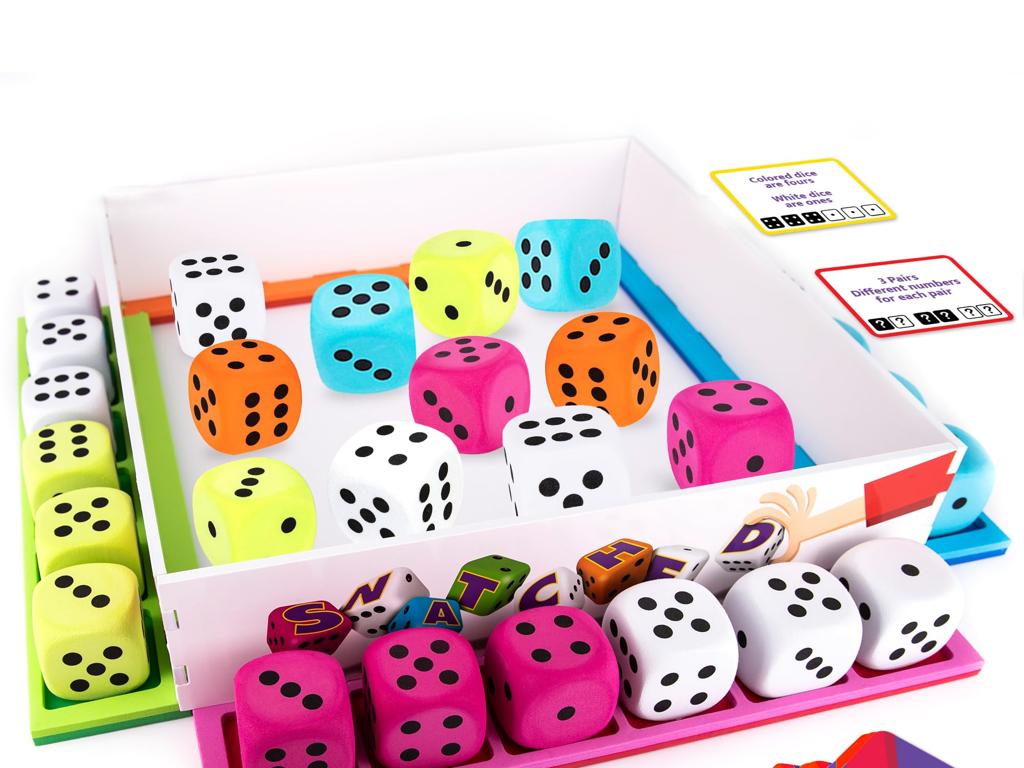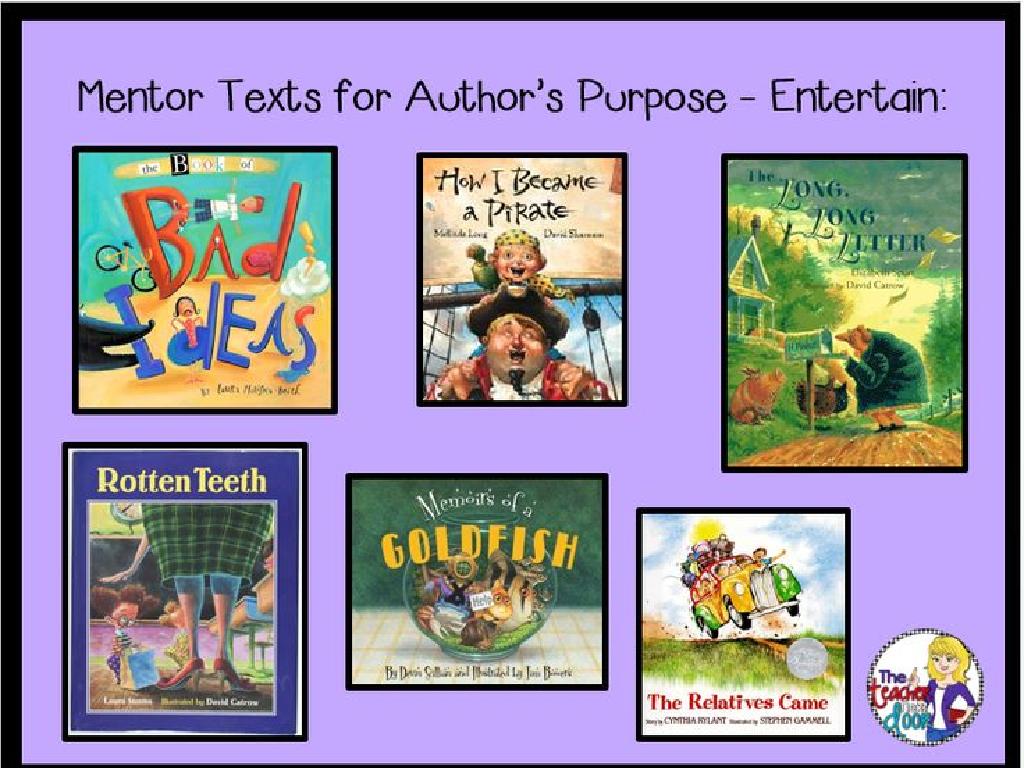Use Context To Identify The Meaning Of A Word
Subject: Language arts
Grade: Fifth grade
Topic: Context Clues
Please LOG IN to download the presentation. Access is available to registered users only.
View More Content
Becoming Word Detectives with Context Clues
– Discover how to find word meanings
– Use surrounding text to define unfamiliar words
– Learn why context clues are crucial
– Context clues prevent misunderstandings and enrich comprehension
– Practice being a word detective
– Look for hints in sentences around unknown words
– Understand the value in reading
– Recognizing words in context improves overall language skills
|
This slide introduces the concept of using context clues to determine the meaning of unfamiliar words, an essential skill for reading comprehension. Emphasize to students that being a ‘word detective’ means looking for hints or clues in the text around a word they don’t know. Explain that understanding how to use context clues can prevent misunderstandings and make reading more enjoyable and meaningful. Encourage students to practice this skill by reading passages and identifying new vocabulary using context. Discuss the importance of this skill not just for their current grade, but for lifelong learning and literacy.
Exploring Context Clues
– What are context clues?
– Hints within text that help define words
– Types of context clues
– Definition, Synonym, Antonym, Example, Inference
– How context clues aid comprehension
– They let us infer the meaning of new vocabulary
– Practice using context clues
– Find words in a passage & deduce meaning from clues
|
Context clues are essential for students to develop their vocabulary and reading comprehension skills. By understanding and identifying the different types of context clues, students can become more independent readers. Definitions provided in the text, synonyms and antonyms, examples given, or general inference can all serve as context clues. During the lesson, emphasize the importance of paying attention to the words and sentences around unfamiliar terms. Encourage students to practice by providing them with passages and asking them to highlight unfamiliar words and the clues that help define them. This interactive approach will help solidify their understanding of context clues.
Context Clues: Cracking the Code of New Words
– Types of context clues
– Synonyms, antonyms, explanations, and examples are types of context clues.
– Identify clues in examples
– Find the hint that helps define the new word.
– Discuss meanings of new words
– Use the clues to guess the word’s meaning before looking it up.
– Practice with classmates
|
This slide aims to teach students how to use context clues to determine the meaning of unfamiliar words. Start by explaining the different types of context clues: synonyms, antonyms, explanations, and examples. Then, present sentences with new vocabulary and guide students to identify the specific context clue used. Encourage them to infer the meaning of the word based on these clues. Finally, facilitate a group activity where students practice this skill with their classmates, discussing their inferences and verifying them by looking up the words. This interactive approach will help solidify their understanding of using context to interpret vocabulary.
Practice Time: Context Clue Detectives
– Read sentences as a group
– Hunt for context clues
– Look for hints around the word that help explain it
– Pair up for a word-meaning mission
– Share ideas with your partner to figure out word meanings
– Discuss findings with the class
|
This slide is for a class activity focused on using context clues to determine the meaning of new words. Start by reading sentences together as a class, and then have students act as ‘detective’ to find and interpret context clues. Students should work in pairs to discuss their thoughts on what each new word means, using the surrounding text as evidence. Afterward, pairs will share their findings with the class, fostering a collaborative learning environment. As a teacher, facilitate discussions, guide students to use context effectively, and provide feedback on their interpretations. This activity enhances critical thinking and comprehension skills.
Group Activity: Context Clue Challenge
– Form groups and pick new vocabulary
– Create sentences with context clues
– Clues can be definitions, synonyms, antonyms, or examples within the sentence.
– Present sentences to the class
– Explain the context clues used
– Share why you chose those clues and how they help.
|
This group activity is designed to enhance students’ understanding of context clues through collaborative learning. Divide the class into small groups and assign each group a set of new vocabulary words. Each group will create sentences that use these words, making sure to include context clues that help reveal the meaning of the words. After crafting their sentences, groups will present them to the class, challenging their classmates to infer the meaning of the new vocabulary. As they present, they should explain the context clues they incorporated and discuss how these clues aid in comprehension. This activity fosters teamwork, critical thinking, and discussion skills. For the teacher: prepare a list of vocabulary words suitable for fifth graders, monitor the group discussions, and assist with sentence construction if necessary. Encourage creativity and praise effective use of context clues.
Using Context Clues in Books
– Select a book from class library
– Highlight unfamiliar words
– Infer meanings using context
– Look for hints in the text around the word to guess its meaning
– Discuss findings in class
– Be ready to explain how you figured out the word meanings
|
This slide is designed to encourage students to practice using context clues to determine the meaning of unfamiliar words. They should choose a book that interests them from the classroom library, which will make the activity more engaging. As they read, they are to highlight any words they do not know. Then, they should use context clues such as definitions, examples, or descriptions provided in the text to infer the meanings of these words. In the next class, students will have the opportunity to discuss the words they found and share how they used context clues to understand them. This exercise will help enhance their vocabulary and reading comprehension skills.
Class Activity: The Context Clue Game
– Engage in the Context Clue Game
– Navigate the board using context clues
– Use hints from sentences to advance on the game board
– Find meanings of challenging words
– Look for words you don t know and decipher them
– Compete to become Context Clue Champions
|
This interactive class activity is designed to help students practice using context clues to determine the meanings of unfamiliar words. Set up a game board around the classroom with various sentences featuring challenging words. Students will move from sentence to sentence, using context clues to figure out word meanings. They’ll work in teams to foster collaboration. The first team to correctly interpret all the words and reach the end of the board wins the title of ‘Context Clue Champions’. Prepare a list of sentences with challenging words beforehand, ensure clear instructions are given, and have a prize ready for the winning team to celebrate their achievement.
Reflection on Context Clues
– Recap on context clues
– Importance of context clues
Context clues help us infer word meanings, enhancing comprehension.
– Share a word and its clue
Example: ‘The arid desert.’ Arid means dry, clue: desert.
– Discuss how it helped understanding
Understanding context clues aids in reading without a dictionary.
|
As we wrap up today’s lesson, let’s reflect on the importance of context clues in reading comprehension. Context clues are the hints or suggestions that surround unfamiliar words and help us deduce their meanings without needing to consult a dictionary. This skill is crucial for reading fluently and for expanding our vocabulary. Encourage each student to share a word they’ve learned today, along with the context clues that helped them understand its meaning. Discuss how recognizing these clues has made it easier to understand the text as a whole. This reflection will reinforce the day’s learning and give students confidence in their ability to tackle new words in their future reading.






